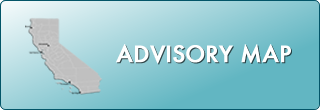Health and Safety Advisory: Fish Outside SF Bay OK, But Avoid Fish From Spill Area Until State’s Safety Evaluation is Completed, Exercise Caution at Reopened Beaches
CONTACTS: SAM DELSON (OEHHA) (916) 324-0955
STEVE MARTARANO (DFG) (916) 322-8639
Fish and shellfish caught from waters outside the spill area remain as safe to eat as before the spill, but marine life from the spill area should be avoided until the evaluation of its safety is completed, according to the Office of Environmental Health Hazard Assessment (OEHHA), which is leading the evaluation effort.
“Protecting the public’s health is our top priority,” said OEHHA Director Joan Denton. “It’s a good idea to avoid any fish from the spill area until we can verify it is safe for consumption.”
The State Department of Fish and Game (DFG) has collected almost 1,000 crabs, mussels, herring and surfperch from a variety of locations and depths both inside and outside the spill zone and has sent that marine life to laboratories for testing. The marine life collected include both Dungeness and rock crabs, and the collection locations range from Bodega and Tomales bays to Angel Island, the Berkeley Pier, Ocean Beach, and the Marin and San Mateo County coasts. These locations include both the spill zone and areas outside of the spill zone for comparison purposes. Results of the tests are expected toward the end of next week.
OEHHA is the science arm of the California Environmental Protection Agency and is working with DFG, the Department of Public Health and other agencies to conduct the fish safety evaluation. OEHHA plans on releasing its finding from the evaluation by Dec. 1.
Gov. Schwarzenegger has suspended fishing until Dec. 1 in the spill zone, which has been defined by DFG as including all San Francisco Bay waters west of the Carquinez Bridge, excluding rivers, streams, creeks and their tributaries. It also includes a three-mile-wide section of the Pacific Coast between the Point Reyes Lighthouse in Marin County and San Pedro Point in San Mateo County.
Health officials are asking people to stay away from shore areas until cleanup efforts are completed. After beaches are reopened, people who find oil deposits along the shore should report them to cleanup officials by telephoning (415) 398-9617.
OEHHA has issued the following safety advice for beaches in the spill area:
- Avoid direct contact with spilled oil, which can cause skin irritation. Prolonged contact can cause rashes.
- If you get oil or tar on your skin, wash it off with soap and water, and be certain to wash your hands before eating.
- If you get oil on your clothing, wash it in the usual way. There is no need to use harsh detergents, solvents or other chemicals to wash oil from skin or clothing.
- Do not burn driftwood or other debris that may be contaminated with oil.
- Use common sense. Do not swim in water with an oil slick and do not swallow water from the area. Oil-contaminated water can cause choking and lead to severe pneumonia if it gets into the lungs.
- There is no risk of adverse health effects from breathing air near spilled oil unless there is prolonged exposure to fumes in closed spaces.
Although some beaches have been reopened, oil is continuing to wash onto beaches that have been cleaned up, and this is expected to continue for months. It is possible that some beaches may be opened and closed several times as they are cleaned, re-oiled and then cleaned again.
As of this week, nine Bay Area beaches had been reopened, but 18 remained closed. A list of closed and opened beaches throughout the Bay Area is available at http://www.coscobusanincident.com.
OEHHA’s safety guidelines call for avoiding consumption of any fish or shellfish from the Bay until analysis of the collected samples is completed. Visible oil or oily smell are obvious indications of contamination, but fish and shellfish from the spill area could still pose a potential risk even if there are no visible signs of contamination. The State’s findings from the evaluation of the safety of the fish and shellfish are expected to be available by Dec. 1.
Fish, crabs and other shellfish from outside the spill zone are generally safe to eat, but women of childbearing age and children should follow pre-spill guidelines for mercury exposure and limit to one meal per week consumption of sport fish caught from areas without specific advisories. Health advisories on fish caught from specific California locations.


